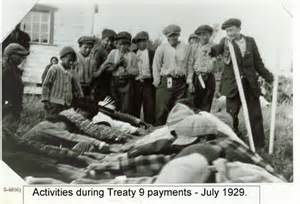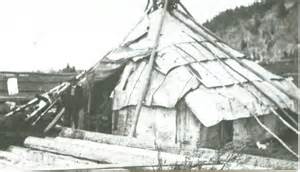The History of Eabametoong First Nation (Fort Hope)
The History of Eabametoong First Nation (Fort Hope)
Link to the communities main page
Link to video and article links about Fort Hope
Pictures of Eabametoong First Nation. (Fort Hope)
The Churches of Ebametoong First Nation



Link to history information
The name Fort Hope comes from long ago when the fur trade was booming in northern Ontario. Hudson Bay company built a trading post by the lake because the main form of transport was by canoe. This was back in the year 1890. The trading post was abandoned in the 1960’s but later, a new store was built on reserve overlooking the lake. Nothing remains of the old trading post but it would have been nice if it was. Two churches were built at the old bay site, Roman Catholic Church and the Church of England. The original churches are still standing and the cemetary is still in use today.
The site referred to as “Old bay” or “Old Fort Hope” is 6 km southwest of the reserve across Eabamet lake.
Eabametoong
Eabametoong is a traditional name which means ” The reversing of the waterplace”. Each year due to water runoff, the water at Eabamet narrows which flows into the Albany River, reverses the flow back into Eabamet Lake for a short period of time. Before the fur trade, the people of Eabametoong lived at Eabamet Lake in seasonal locations because of the abundance of fish such as sturgeon, walleye, and whitefish. When the fur trading post and the missions were built, more people were drawn to take up residence close to the “Fort Hope” site.
In 1905, when the treaty was signed at Fort Hope, Fort Hope Band and the Fort Hope Indian Reserve came into existence. At the time of the treaty signing, 500 people signed on. The new community of Eabametoong was started in 1982. The official name, Eabametoong First Nation” and flag were adopted in 1985.
A HISTORICAL TIMELINE OF EABAMETOONG FIRST NATION
1890 – Hudson Bay Co. establishes a fur trading post on Eabamet Lake
1891 – The outpost of Fort Hope is established at Attawapiskat Lake to separate the Indians and the fur traders
1894 – The Roman Catholic Church begins construction of a Church
1898 – Construction of the first Anglican Church is completed
1899 – The first calf is born at the outpost
1905 – The James Bay Treaty No.9 is signed
1908- The first Peterborough canoes are brought in for the Hudson Bay Co.
1909 – A survey of the reserve begins
1911 – The survey of the reserve is completed by Dobie on July 19th.
1920 – Peterborough canoes replace birchback canoes
1927 – Gold is discovered at the Fort Hope mine(Round Lake)
1930’s – The first float planes enter the area and children begin attending Residential School
1931 – Fort Hope reserve # 64 is ratified by order-in-council
1940 – The First Nations Band surrenders the mineral rights and the reserve is declared open for exploration
1940’s – A Gold Rush results in the discovery of Gold deposits to the East of the reserve by Williamson
1955 – The first school is opened at Old Home Point on the reserve
1958 – Gold deposits are discovered by Little Long Lac Mines at the reserve lake
1962 – The present community settlement of Eabametoong begins to take shape
1965 – Construction of a new day school begins and the Residential School system ends
1967 – John C. Yesno officially opens the new school in September
1969 – Construction of a Generating System commences
1970 – Fort Hope Power Authority commences operation
1971 – A Nursing Station is built
1973 – Construction on airstrip commences
1975 – Telephone and radio communications arrive on reserve
1976 – A Co-operative Store and Police Station are opened
1980 – A forest fire destroys most of the community infrastructure and the village is temporarily evacuated
1983 – TV Ontario commences local telecasting
1985 – The modern traditional name of “Eabametoong First Nation” was adopted
http://www.eabametoong.firstnation.ca/node/26
Eabametoong came to be during the fur trade era when the Hudson’s Bay Company set up a trading post by Eabamet lake in 1890. Canoe was used as the main source of transportation so the post had to be near water. The Fort Hope Band came into existence in 1905 when the treaty was signed by 500 people. The new community of Eabametoong started in 1982 with the official name of Eabametoong First Nation being adopted in 1985.
http://en.wikipedia.org/wiki/Eabametoong_First_Nation






Interact with us using Facebook